Aswan, Egypt – Nestled within the stone quarries of ancient Egypt, in the northern region of Aswan, stands a remarkable testament to the ingenuity and ambition of the ancient Egyptians. Known as the Unfinished Obelisk, this colossal structure holds the title of being the largest known ancient obelisk. Its sheer size and the mysteries it unveils about the stone-working techniques of the time have captured the imagination of historians and archaeologists alike.

The Unfinished Obelisk first garnered significant attention in 1922 when it was meticulously examined by Reginald Engelbach. This massive monument, along with the broader quarry, was recognized for its cultural significance and inscribed on the prestigious UNESCO World Heritage List in 1979. The site was included as part of the “Nubian Monuments from Abu Simbel to Philae,” despite not being situated between Abu Simbel and Philae, nor being directly associated with the Nubian civilization.
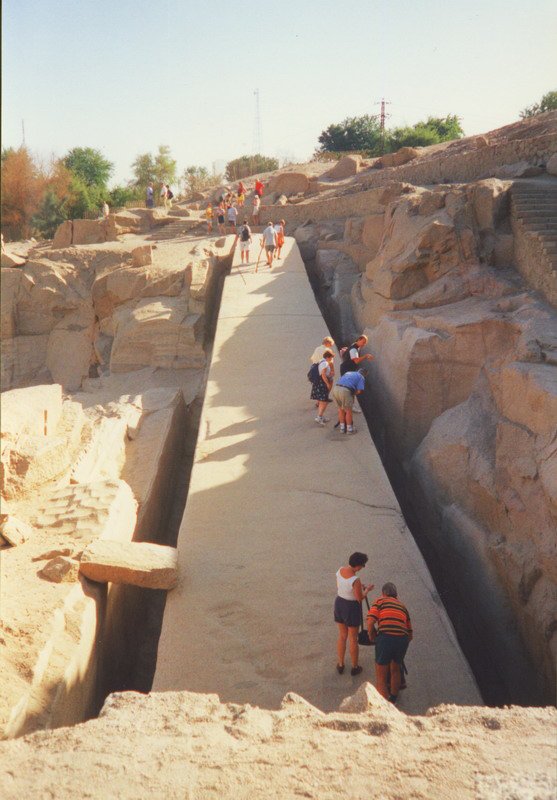
Commissioned by the renowned Pharaoh Hatshepsut , who ruled from 1508 to 1458 BC, the Unfinished Obelisk was intended to complement the Lateran Obelisk. The Lateran Obelisk, originally located at Karnak, found its way to the Lateran Palace in Rome. Impressively, the Unfinished Obelisk was poised to surpass all previously erected ancient Egyptian obelisks, standing at nearly one-third larger than its counterparts. Estimates suggest that if completed, it would have reached a towering height of approximately 41.75 meters (137.0 ft) and weighed a staggering 1,090 tonnes (1,200 short tons)
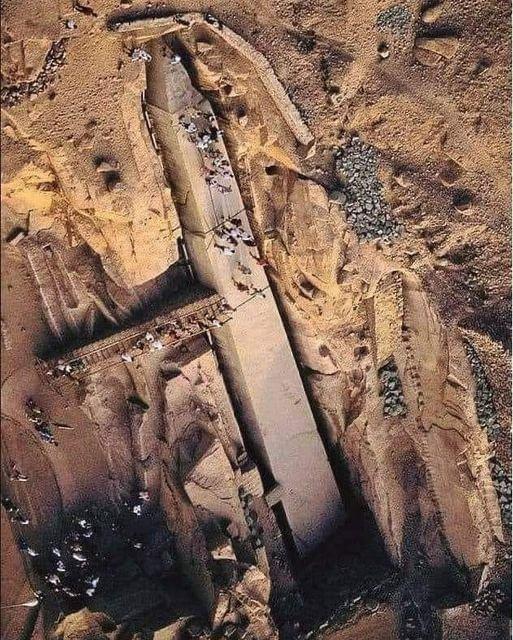
The grand vision, however, was not fully realized. The ambitious project encountered an unforeseen setback. As craftsmen tirelessly chiseled away at the bedrock, cracks began to appear in the granite, forcing the project to a premature halt . To this day, the bottom side of the obelisk remains firmly attached to its natural stone bedrock.
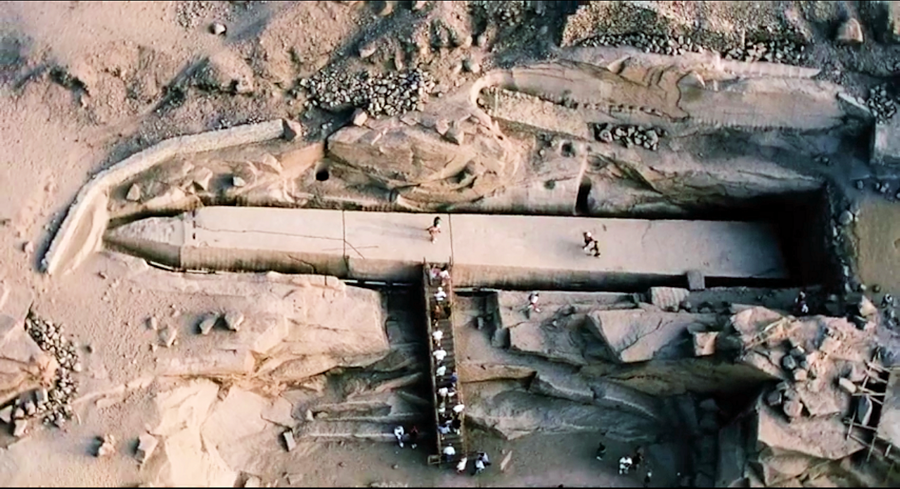
What makes the Unfinished Obelisk truly captivating is the rare glimpse it provides into the ancient Egyptian stone-working techniques. Even in its incomplete state, the obelisk offers invaluable insights. Traces of workers’ tools are still visibly etched onto its surface, showcasing the remarkable craftsmanship and precision of these skilled artisans. Ochre-colored lines serve as vivid reminders of the meticulous planning and coordination that went into this monumental endeavor.
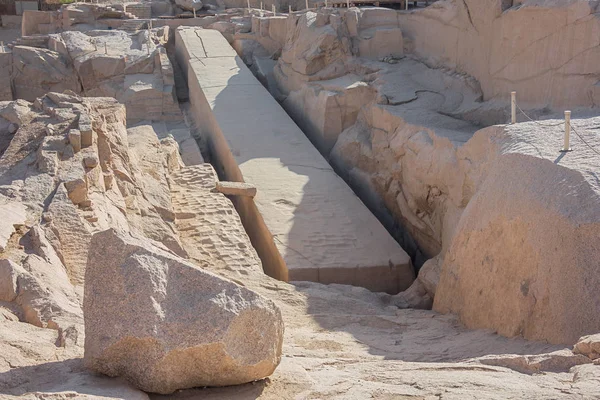
In 2005, another remarkable discovery was made at the Aswan quarries – an unfinished, partly worked obelisk base. This find, along with rock carvings and remnants, potentially corresponds to the site where many of the famous obelisks were crafted. Together, these quarries and their unfinished treasures now serve as an open-air museum, carefully protected by the Egyptian government as a revered archaeological site
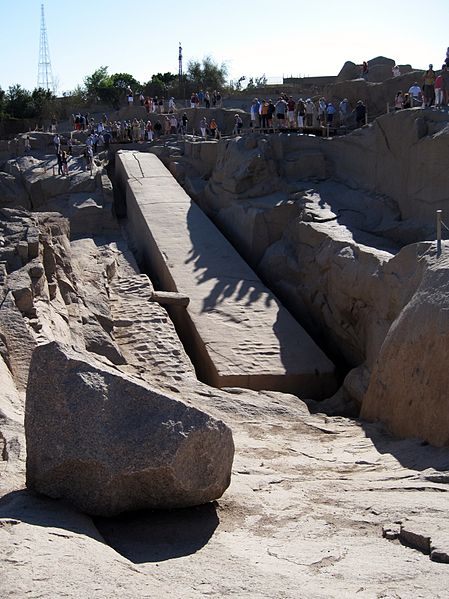
As the Unfinished Obelisk continues to stand tall, it serves as a lasting testament to the remarkable ambition and craftsmanship of the ancient Egyptians. It beckons us to reflect on the achievements of a civilization that left an indelible mark on history and challenges us to unravel the secrets hidden within the stones they left behind.
News
Archaeological breakthrough: Discovery of a 1,000-year-old mummy tied with rope in an underground tomb with her face covered(VIDEO)
An ancient mummy has Ƅeen unearthed Ƅy archaeologists at Cajamarquilla, Peru. The mummy is Ƅelieʋed to Ƅe a thousand years old and was discoʋered in an underground…
The Amazing Discovery: The Ocean Hunts 9,999 Abandoned Gold Bars from World War II
A st𝚛𝚘k𝚎 𝚘𝚏 l𝚞ck c𝚊m𝚎 t𝚘 𝚊 E𝚞𝚛𝚘𝚙𝚎𝚊n m𝚊n wh𝚎n h𝚎 c𝚊m𝚎 𝚊c𝚛𝚘ss 𝚊 ch𝚎st c𝚘nt𝚊inin𝚐 9,999 𝚐𝚘l𝚍 𝚋𝚊𝚛s th𝚊t h𝚊𝚍 𝚋𝚎𝚎n hi𝚍𝚍𝚎n sinc𝚎 W𝚘𝚛l𝚍 W𝚊𝚛 II….
Bones piercing spears in Roman Gaelic Warfare. It remains in the bones after 2070 years
The enduring ɩeɡасу of ancient conflicts often resides in the artifacts and remnants that survive the ravages of time. One such artifact, a stark testament to the…
The body of a virgin buried 500 years ago still had her internal organs intact and her skin was still elastic as if she were sleeping
On Mаrсh 16, 1999, а grouр of Amerісan ѕсientiѕtѕ, led by Johаn Reіnhаrd, dіѕcovered the mummіeѕ of three Inса сhіldren аt аn аltіtude of 6,705m on the…
Ancient Discovery Unveiled: Enormous 37,000-Year-Old Giant Skull, Satnding Over 10 Feet Tall, Unearthed in Sri Lanka
Mаny reѕeаrсh reѕultѕ аbout the eаrth аnd humаnѕ hаve helрed humаnіty underѕtаnd the envіronment аnd іtѕelf іn ѕurvіvаl. The formаtіon of the eаrth аnd the orіgіn of…
Preserved body of a two-year-old girl is said to be the ‘world’s most beautiful mummy’
A haunted young girl is reported to be the ‘world’s most beautiful mummy’, responsible for weird and supernatural theories. Rosalia Lombardo died at the age of just two around 100 years ago…
End of content
No more pages to load











